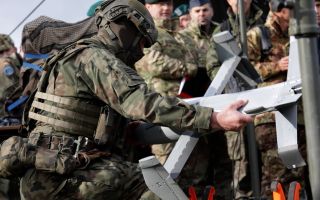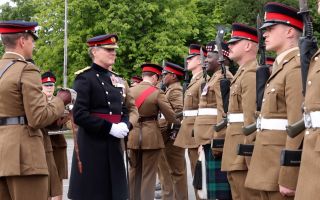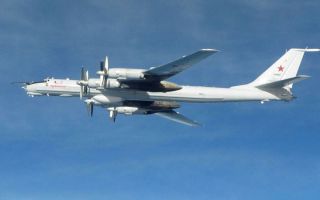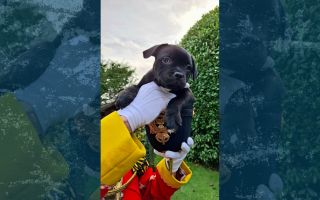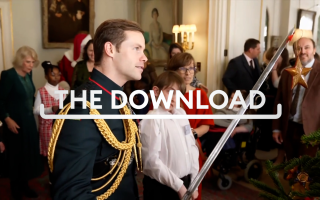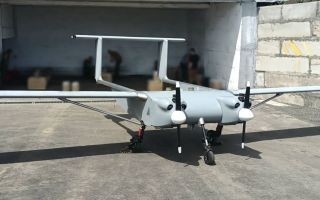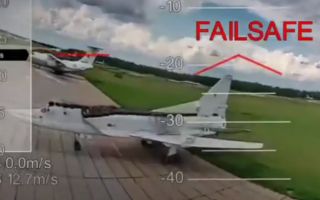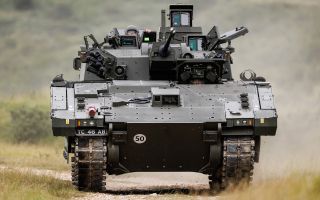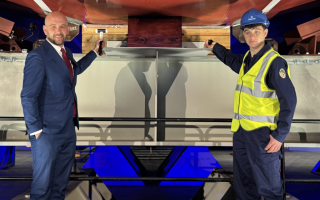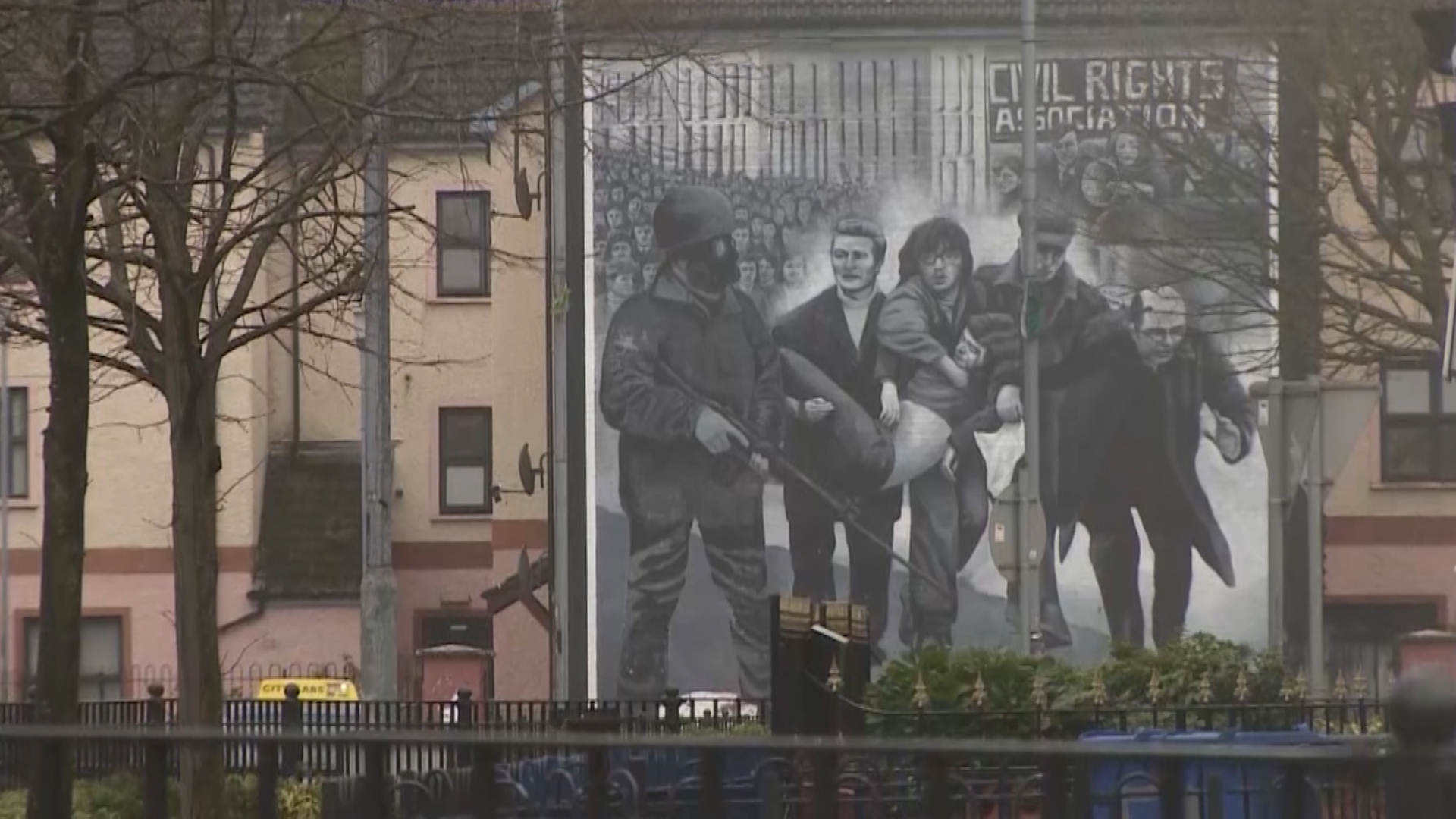
No jury and not guilty: Find out how the Soldier F Bloody Sunday trial unfolded

The trial of a former paratrooper accused of murdering two men on Bloody Sunday has ended at Belfast Crown Court with him being found not guilty of all charges - and this is how the case unfolded.
Soldier F, who cannot be identified due to a court order, is accused of the murders of James Wray and William McKinney.
Members of the Parachute Regiment shot dead 13 civil rights protesters in Londonderry on 30 January 1972.
He is also charged with the attempted murders of five other people – and has pleaded not guilty to all charges.
:: This article will be periodically updated with key moments from the trial.
Families of victims and NI Veterans Commissioner speak outside court
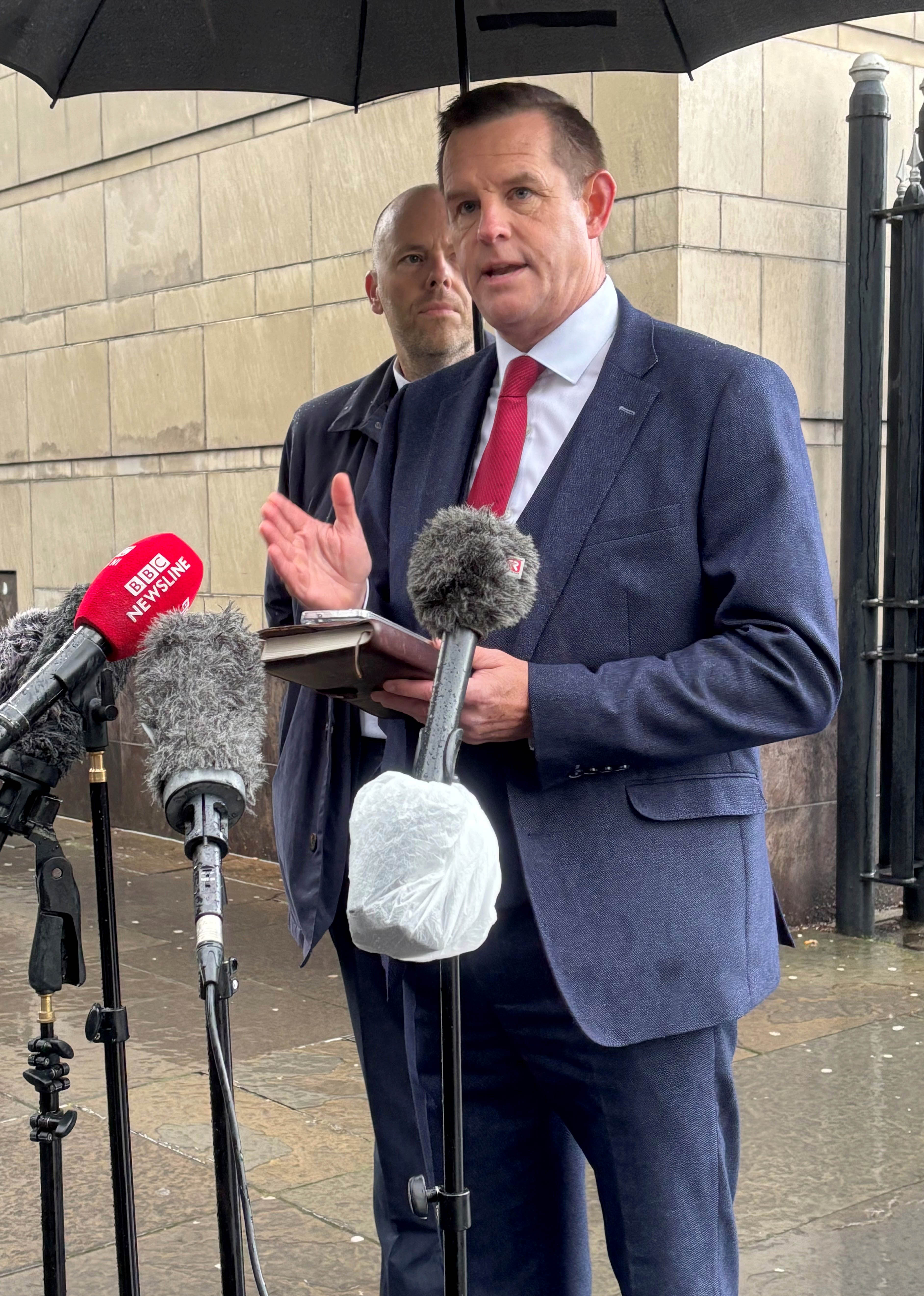
A short rally took place outside Belfast Crown Court prior to the commencement of the trial.
John McKinney, the brother of William McKinney, described the day as "momentous", adding: "It has taken 53 years to get to this point, and we have battled all the odds to get here."
Northern Ireland Veterans Commissioner David Johnstone said many veterans felt "frustrated, angry and betrayed" by the legacy process taking place.
"The vast majority… of nearly 300,000 Armed Forces that served here in Northern Ireland during Op Banner did so with dignity, with restraint and with professionalism," he said.
"As Veterans Commissioner, I will continue to advocate for a legacy process that ensures fairness for all, upholds the principles of justice and recognises the service and the sacrifice of those who stood in defence of all sections of this community during one of the darkest chapters in our history."
Prosecution sets out case
Setting out the case for the prosecution, Louis Mably KC said the trial would have a "specific and narrow focus" on shootings by a group of soldiers from the Parachute Regiment which took place in a courtyard in Londonderry's Bogside area on Bloody Sunday.
"The shooting was unnecessary and it was gratuitous and it was carried out, given the weapon involved, with an intent to kill and, in any event, at the least with an intent to cause really serious harm," Mr Mably added.
Soldier F is present in the courtroom, but is cloaked by a long curtain to preserve his anonymity.
Admissibility of 'decisive evidence' is examined
The prosecution is seeking to use statements made by Soldier G and H which it argues is "decisive evidence".
They include statements made by the Royal Military Police (RMP) on the night of the shootings, as well as statements to the Widgery Inquiry later in 1972, and a transcript of oral evidence they gave to that inquiry.
The RMP statements were ordered under compulsion, with no legal advice being given to the soldiers.
The Widgery Inquiry was "similarly compelled", said Prosecution Barrister Louis Mably KC.
Mr Mably described the statements as "truthful in some respects, but untruthful in others", with some of the contents consistent with other eye-witness evidence.
"Truthful in identifying which [soldier] opened fire… they had no good reason to lie about that," he said.
"Statements of G and H taken together is obviously decisive evidence, the question of whether or not F opened fire."
While Soldier G is understood to have died, Soldier H remains alive.
Soldier H's solicitors have told prosecutors that if they are forced to give evidence at trial, they will exercise their privilege against self-incrimination.
The defence is set to respond on Thursday.
'Complete cloud of uncertainty' surrounding 'decisive evidence' delivered yesterday
Soldier F's defence barrister Mark Mulholland KC said there was a "complete cloud of uncertainty" around the process of how the statements to the RMP were taken.
Questioning whether G and H had colluded, he said the RMP statements were a "series of unreliable, fundamentally flawed, inconsistent allegations" from 50 years ago. He claimed they may have been "seeking to justify" their own use of force.
In the statements and oral evidence given to the Widgery Tribunal, Mr Mulholland said witnesses had been questioned, not cross-examined on that evidence, pointing out that it was an inquisitorial, not an adversarial process.
Judge Patrick Lynch indicated that he planned to deliver his ruling on the hearsay applications next Wednesday.
Hearsay evidence ruled as admissible
Judge Patrick Lynch has today ruled that the hearsay evidence in the trial of Soldier F for the murder of two men during Bloody Sunday is admissible.
Judge Lynch heard arguments about the "decisive" evidence last week, which included statements by Soldier G and H to both the Royal Military Police and the Widgery Tribunal.
Speaking outside court, Ciaran Shiels, solicitor for the Bloody Sunday families, welcomed the ruling.
Meanwhile, Paul Young, of the Northern Ireland Veterans Movement, said the ruling "will be met with great disappointment by the veterans who served in Northern Ireland".
Mr Young also criticised the newly-announced Legacy Commission to address ongoing issues related to the Troubles, saying: "there's nothing in there for protection for veterans".
Judge Patrick Lynch said it would be "inappropriate" to give reasons for his decision at this stage, but he will do so in the future, if necessary.
"I am not only judge in relation to legal issues but also the tribunal of fact, with the ultimate responsibility of determining guilt or innocence based upon such facts as I decide have been proven to the criminal standard, that is, beyond reasonable doubt," he said.
When the trial resumed today (Wednesday 1 October), one of the men who was injured on Bloody Sunday said he pretended to be dead while lying on the pavement after he was shot.
Joe Mahon also said he saw a solider fire shots at another victim who was on the ground before saying "I've got another one".
Mr Mahon told the court he was 16 at the time and had attended the civil rights march in Derry on Bloody Sunday.
He said he went to Glenfada Park after becoming aware of disturbances and hearing that people had been shot. He said he saw a small number of soldiers enter Glenfada Park North where a large group of people had gathered.
"People tried to run away"
He said he saw one soldier with a rifle under his arm open fire in the direction of people in the area. Mr Mahon said there was a "jam" as people tried to run away.
"We were trying the gates of a couple of houses to get into the yards but they were locked," he said.
Mr Mahon then told the trial he found himself on the ground, adding: "I thought I was hit by a rubber bullet.
"I know it might sound funny, but when you see someone getting shot on TV, they are rolling about in pain - I wasn't that way.
"I heard a voice beside me. There was a gentleman to my right lying on the road. He says 'I am hit'. The way I was lying he was halfway down my chest."
The court was told that Mr McKinney and Mr Wray were lying close to Mr Mahon after they were shot.
"Pretend you are dead"
When he was asked about the movements of the soldiers, Mr Mahon said: "I saw one walking across the square, walking towards the square to where we were lying."
He said it was the same soldier he had earlier seen opening fire. He added: "He walked past me and Mr McKinney. I heard a voice calling 'pretend you are dead'.
"I must have moved, I didn't know I was shot at the time. I still thought it was a rubber bullet, I was going to try and get up and run [but] I lay and let on I was dead."
Mr Mahon said Mr Wray then moved and the soldier fired at him on the ground. He said the soldier then left the area before returning, after which he said he heard the soldier say: "I've got another one."
Mr Mahon said shortly afterwards he lifted his head and the soldier saw him. He said: "He knelt down in the middle of the square and aimed his rifle at me.
"I turned my head away towards the fence, after what happened to Jim Wray, I expected the same. I turned my head waiting to be shot and I heard a voice shouting 'first aid, don't shoot'."
Mr Mahon told the trial that members of the public had carried him from the square. A bullet had entered his right pelvis and he spent several weeks in hospital.
The trial is now expected to hear evidence from other witnesses who were shot on Bloody Sunday.
A second victim gives evidence
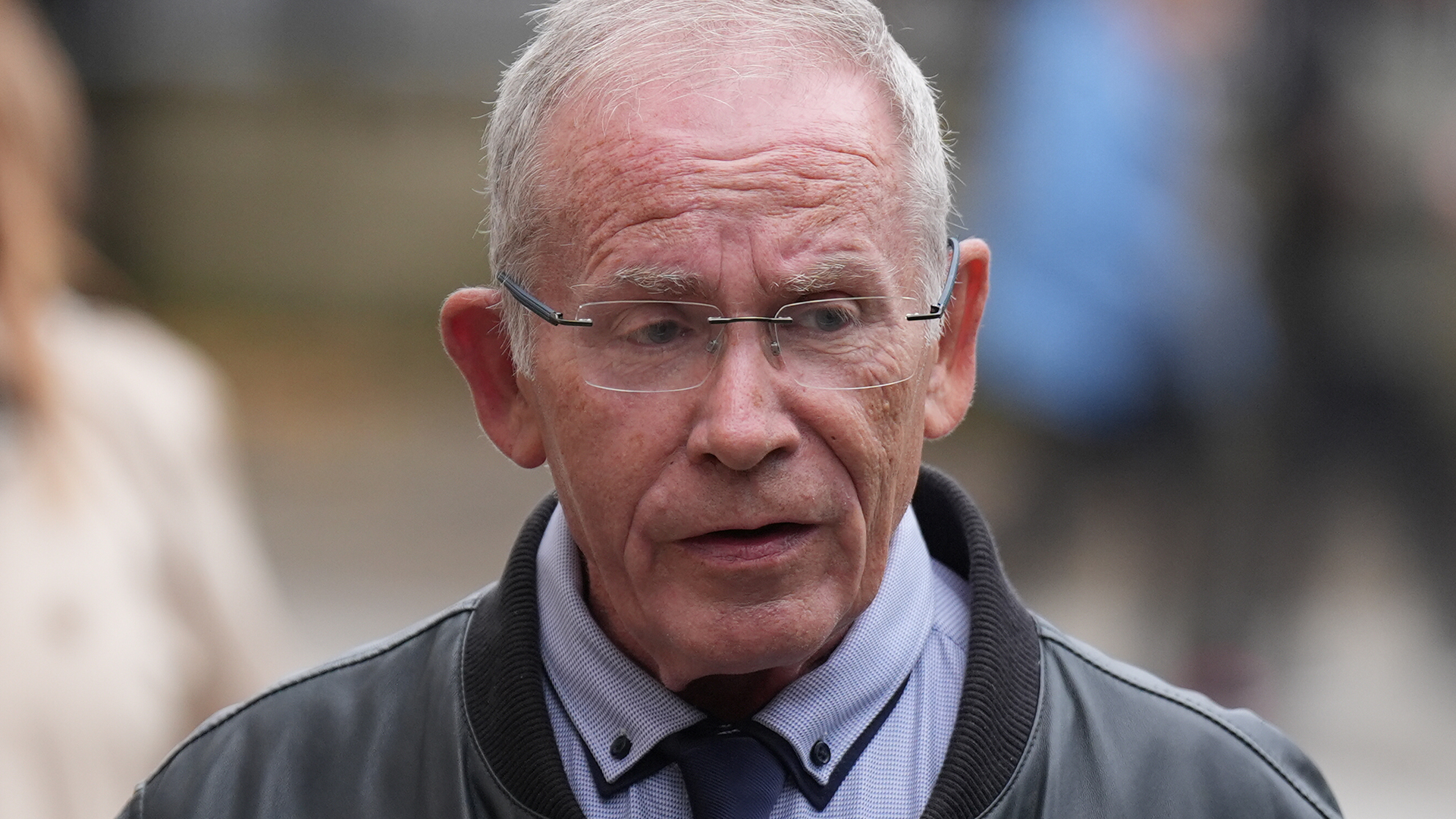
Later, the trial heard evidence from Joe Friel, who was shot in the chest on Bloody Sunday when he was 20.
He was taking part in the civil rights march when he heard what he thought were shots, and he tried to get to his home at Rossville flats in Derry.
He said he could not make it home, so had taken cover behind two cars along with a number of other people in Glenfada Park North.
During a lull in the shooting, he said a number of people had attempted to run from the area.
Mr Friel told the court he saw a soldier firing from a rifle at his hip.
He said: "One hit me. I just felt a thud in my chest and was coughing up blood.
"I staggered around the corner into Glenfada Park South and I collapsed."
Mr Friel said he was moved to a house where his wound was dressed before he was taken to hospital.
Asked how clear his recollections were of the day, he said: "When you see someone trying to murder you, you do not forget."
The trial will hear from more witnesses on Thursday (2 October).
Trial hears of the moment schoolboy was shot in the face
As the trial continues today (Thursday 2 October), a witness told the court how he saw his own flesh "breaking away from his face" when he was shot on Bloody Sunday.
Michael Quinn, who said he was a 17-year-old schoolboy when he joined the civil rights march in 1972, also told Belfast Crown Court how he saw other victims fall after being shot when soldiers opened fire in Londonderry.
He told the court how, at one point, he was asked by Mr Wray to carry a banner in the march.
After disturbances broke out, Mr Quinn said he was taking shelter at a rubble barricade in William Street when he saw two Army Saracens enter the area.
He said: "I could see soldiers jumping out of the back of the Saracens.
"One of them was swinging the rifle like a club... that was quite shocking."
He said he then heard four shots.
"That really threw me, I couldn't understand why they were shooting because I hadn't heard anything fired at the Army."
"I am getting out of there"
Mr Quinn then said he saw another soldier emerge from the direction of the Rossville Flats.
He told the court: "He had his rifle by his side, he raised it a little, from a pouch at his side he took out what I took to be a bullet.
"There was a setting sun. It was quite bright. I could see this metal object glistening in the sun.
"He put it into the breech of the rifle."
He added: "At this point, I thought 'I am getting out of here'."
Mr Quinn said he moved towards Glenfada Park North.
He said he then saw two youths there, one of whom had what he thought looked like a nail bomb in his pocket.
A man in his mid-20s approached them, he said, and told them "put those away, you will only get killed".
Mr Quinn said there was sustained gunfire from the Rossville Street area, adding that he then saw a man being shot.
He said: "I heard him call out, scream. I looked at him and saw a ring of blood emerging on his leg, and he was collapsing to the ground.
"I heard someone shout, 'there are people dying' out here."
He added: "I saw a group of people carrying the body of a young man across Glenfada Park."
"I felt myself being struck by the bullet"
Mr Quinn said he tried to get out of the courtyard when he heard someone shout that soldiers were coming in.
"I ran crouching across the courtyard. I remember jumping over the raised ground," he said. "As I was approaching the exit to Abbey Park, I felt myself being struck by the bullet.
"It grazed my shoulder, the jacket I was wearing, and then went through my face and exited through my nose.
"For some reason, I slowed down, and I could actually see the flesh and blood breaking away from my face.
"He added: "I stumbled, and I could see to my right someone falling forward. I thought his head was hitting the kerb.
"What made me think he was shot, [was that] he didn't try to save himself, his hands didn't go out."
Mr Quinn told the court he was taken to hospital, where he was operated on, and said that his cheekbone had been shattered by the bullet.
The trial continues.
Trial hears from teenager who 'told man not to move' before he was shot
The trial continues today (Friday 3 October) with a witness who said he told a man lying on the ground not to move and pretend to be dead moments before he was shot dead on Bloody Sunday.
Malachy Coyle, who was 15 when he took part in the civil rights march, also told the court that he saw a soldier who appeared to be "angry" firing towards a young person who was attempting to run.
He said there was tension as rumours circulated that a man had been shot and that he moved towards Glenfada Park North where he heard gunfire.
"They weren't moving"
Mr Coyle said: "It was high-velocity shots. It was a high crack, it wasn't like a shotgun you see in a film, it was a high-pitched crack."
The witness said he was scared and started to run towards the Abbey Park gap. He was pulled into the backyard of a house by an older man and tried to hide.
He told the court he could see through the slats in the garden fence that there were soldiers in Glenfada Park North.
Mr Coyle said he saw three people lying on the ground. He said the man who was closest to him was still alive.
He said: "He looked up… he says, 'I can’t move my legs'," adding: "I thought the other two people were dead. They weren't moving."
Mr Coyle said he told the man on the ground not to move and to pretend he was dead.
He added: "There was another shot."
Mr Coyle said he heard a groan, and the man's head went down.
"He was shot, I could see the sparks underneath on the pavement. He was gone."
"I am going to shoot you"
Mr Coyle said he then saw a bare-headed soldier who looked "dangerous" and "angry".
He said there were a number of young men in Glenfada Park.
Mr Coyle said: "He turned and looked at them, with a gun, and I think he said, 'I am going to shoot you, you Irish bastards'."
The witness said he and the older man moved out from behind the fence with their hands on their heads because they were afraid they would be shot, and said there were about eight to 10 soldiers in the area.
He told the court he saw the "angry" soldier shoot towards a young man who was attempting to run away.
He said: "I know there was no body found there, but that is what I saw."
A number of witness statements are expected to be read in the trial later today.
Trial hears statements made by Soldier G and H
The trial recommenced on Tuesday 7 October with statements heard from Soldier G and H that were given to the Royal Military Police on the night of the shootings, as well as statements given to the Widgery Inquiry into the shootings later that year, and oral evidence given to hearings in that inquiry.
Soldier G's statement, which was read to the court by a prosecution lawyer, stated that Soldier F had been his partner within their Parachute Regiment platoon.
According to his account, the platoon came under fire, and he ran with Soldier F into Glenfada Park North.
Soldier G's statement says he saw two men carrying short weapons he likens to M1 Carbine rifles. Both he and Soldier F fired at the same time, and he believed he shot one man, and Soldier F shot the other.
However, he added that he might have shot both men.
He described a crowd gathering around the bodies and then running away.
In later statements, he corrected a comment he made about seeing the crowd remove weapons and said he merely assumed this, as the weapons were no longer there when he approached.
In later evidence read to the court from the Widgery Tribunal Soldier G makes another retraction from an earlier RMP statement.
He said: "It's quite wrong to say the man I saw was throwing nail bombs. I think there was a mix-up with the officer."
Soldier H statement is read out
In Soldier H's evidence, there are multiple references to seeing people holding and throwing nail bombs.
Soldier H describes these as looking "similar to a Coke can in size" and said none of them exploded.
He also described seeing a man firing at Soldiers F and G from a frosted toilet window of a maisonette in Glenfada Park.
Soldier H said he fired 19 shots at this man from one magazine and then two more before the suspected gunman appeared to collapse.
However, the court heard cross-examination from the Widgery Tribunal, which appeared to cast doubt on this account.
Soldier H is asked: "Would you be surprised to know no frosted windows were damaged by bullet fire on the 30th of January?"
He replied: "I’d be very surprised".
He is then asked "Would you be surprised to know no bullet holes on the building you mentioned?" and gives the same answer.
The trial will hear further evidence from Soldier H tomorrow.
Trial considers new details revealed in Soldier H statement
The trial continued today (Wednesday, 8 October), when the court heard additional details from the statement made by Soldier H to the Saville Inquiry in the 2000s that said he was so terrified at being "under fire" that his "knees were trembling".
He also said it was the most scared he had been in his career to that point.
Soldier H's earlier statements to the Royal Military Police on the night of the shootings describe seeing Soldier F open fire.
But in later statements, including to the Saville Inquiry in the 2000s, he said he did not remember.
He said he had "tried hard to forget Bloody Sunday" but retained vivid memories of specific events which happened on the day.
He described arriving in Londonderry on the day of the shooting and standing smoking outside a church when he said a round was fired at them.
He also described being terrified as they arrived at Glenfada Park North.
"As I entered the courtyard, I was terrified. I remember my knees were trembling – the knocking of my knees is one of the clearest memories I have of the day," he said.
"Coming under fire was absolutely terrifying; it was more frightening than my first parachute jump."
"I did not see what F, G and E were doing"
Soldier H contended that a nail bomb was thrown at him and then saw a youth holding a "smoking object" which he was "sure was a bomb around the size of a coca cola tin", and threw it at him, when he fired two shots at the youth.
"This was the first time I had ever fired at a live target, the first time I had shot anybody. Because I had been concentrating on this target, it is of this incident I have a memory," he said.
"I have no recollection of what other youths in the courtyard were doing, and I have no memory of what F and G were doing and what shots they may have been firing."
In relation to seeing a man firing at Soldier F and G from a frosted toilet window of a maisonette, at whom he fired 19 shots, he said: "I was concentrating all this time on engaging the sniper, so I did not see what F, G and E were doing.
"By this time I was no longer so frightened, my knees were no longer trembling, but I was very tense."
He also said he could not remember giving the previous statements, but said he accepted they bore his signature.
Statements made by Soldier E were also read, despite objections along the same lines as for the statements by Soldiers G and H being read were made by the defence.
However, Judge Lynch admitted the statement by Soldier E into evidence.
Soldier E also contends the soldiers had come under fire with nail bombs, petrol bombs and missiles in his statements.
Defence argues for case to be dismissed
The prosecution concluded its case on Friday 10 November when the court also heard that Soldier F had been interviewed voluntarily under caution across two days from 8-9 March 2016 by officers from the Police Service of Northern Ireland (PSNI).
He declined to respond to questions on the basis that he no longer has any reliable recollection of those events and made no comment to all questions put to him.
Defence barrister Mark Mulholland KC said the evidence does not "stack up" and has argued for the case to be dismissed.
"An unreliable witness"
On Monday 14 October, he queried changes in the statements given by Soldier H to the Royal Military Police on the night of the shootings, to the Widgery Inquiry later that year and the Saville Inquiry in the 2000s, and described him as an "unreliable witness".
When the trial recommenced in the morning, Mr Mulholland turned to the evidence of Soldier G and put to the court that the statements of G and H fundamentally contradict each other in terms of who had fired, where and when.
"We go from three youths with nail bombs in H, to two youths with M1 carbines in G and, quite tellingly on their own accounts, G doesn't seem to see H fire, and H, moving aside from the waste ground statement, then has G fire, but can't say what he was firing at," he said.
"At every turn, the contradictions are absolutely fundamental when one considers their bearing on reliability of the accounts that they provide."
Mr Mulholland contended they are "swimming in this stagnant pool of contaminated fabricated evidence". He added: "When one steps back for a moment, how does one start to distinct fact from fiction in these accounts?
"Looking now at the state of this evidence in light of the unequivocal civilian evidence… it just simply does not stack up."
Earlier in the trial, Judge Patrick Lynch ruled hearsay evidence could be admitted.
Now, almost three weeks later, Mr Mulholland said in light of some evidence not having been called by the prosecution, the defence assessed it was essential for the court to revisit the admitted hearsay evidence.
"The critical issue that was flagged at the outset in our submission remains as part of that, which is, 'did Soldier F fire his weapon at the material time in Glenfada Park North?', and that is the prosecution case," he said.
"The import the statements of G and H are that F, acting together with G, opened fire in Glenfada Park North. That case is the case we have to meet, that's the case on the evidence we respectfully submit now that one sees the full evidential landscape is simply lacking when one considers the other evidence that can be called.
"According to the prosecution opening, G and H's demonstrably false accounts was an attempt to justify and confuse. That may be the most logical explanation of all."
The prosecution responds
Louis Mably KC, for the prosecution, said: "That hearsay evidence provides direct evidence that Soldier F opened fire at civilians.
"That evidence comes from two separate sources, Soldier G and Soldier H.
"The evidence was repeated by each witness on different occasions, including on oath."
Soldier F trial to continue
Judge Patrick Lynch dismissed a no-case-to-answer application by the defence on the basis of unreliable evidence being relied on by the prosecution.
Delivering his ruling at the start of the day's hearing on Thursday 16 October, he said the statements of former paratroopers Soldiers G and H would be admitted.
"I decline to direct a verdict of not guilty on this basis," he said, before inviting the defence to open its case.
But Mark Mulholland, for the defence, said he would not be calling Soldier F to give evidence.
Verdict reached – not guilty
Soldier F has been found not guilty of committing two murders and five attempted murders on Bloody Sunday in Londonderry in 1972.
Delivering his judgment at Belfast Crown Court, Judge Patrick Lynch said the evidence presented against the veteran fell well short of what was required for conviction.
The non-jury trial heard evidence across four weeks, which included statements by two of Soldier F's colleagues.
Relatives of the men killed and supporters also attended each day of the trial.

